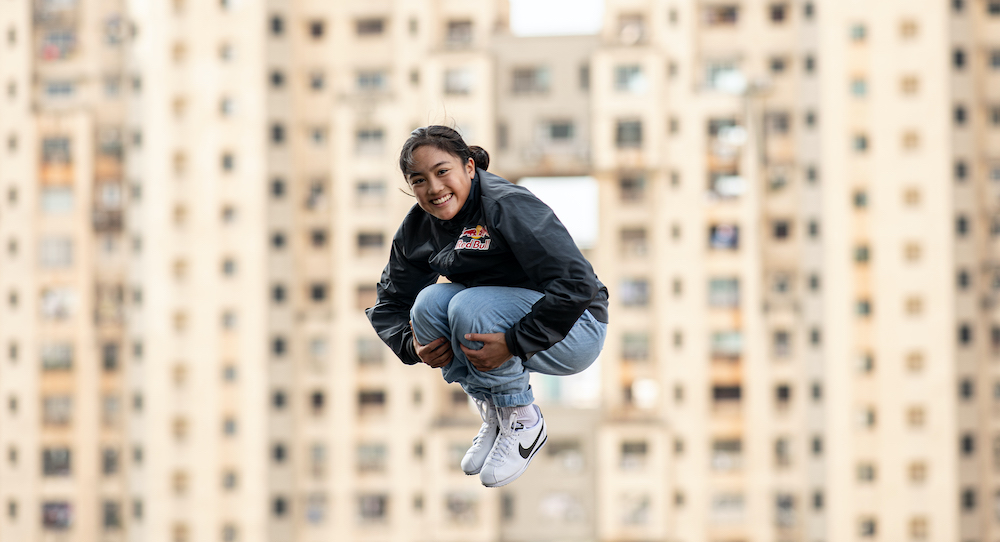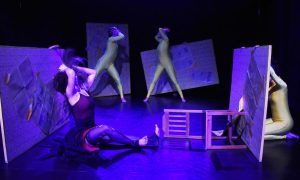May has been Mental Health Awareness Month, and while the world and so many of us within the dance community are coping with the struggles of a global pandemic, prioritizing mental health has never been more important. Dance Informa spoke with four Red Bull artists — Logistix, Neguin, RoxRite and Angyil — about their mental health practices and advice for staying mentally well during this time.
Logistix (Instagram: @logistx_ugf)
At just 17, Logistx is one of the youngest B-Girls on the scene and has made a name for herself within the industry, winning major battles, including the 2018 Silverback Open B-Girl competition. Having moved to LA from her home in San Diego five years ago, she signed to an agency and pursued dance in every way she could, winning season two of World of Dance with her then-team The Lab, performing at Arena LA and joining breaking crew Underground Flow. In isolation, Logistx is focusing on moving and dancing as much as possible throughout her day.
Why is dance so important for mental health?
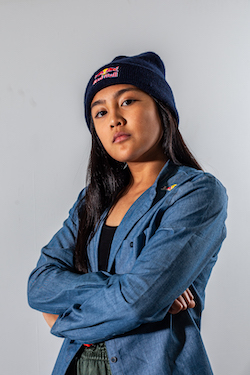
“Dance both helps my mental health and can hurt it sometimes, because I’m doing it professionally. I would say that the awesome part is that it’s an emotional outlet. I’ve been really looking into art therapy, and as an artist, I can feel how healing it is. I can release emotions through movement, I can connect with other people and have an energy exchange through movement, and it’s another way for me to take my mind off of certain things. The type of lives we’re all living can be very structured to where we wake up and know we have things scheduled and things to do, so dance is a source of freedom.”
Describe a typical day in isolation.
“I wake up really early, go outside and jog to a spot by the park. I’ll either do a freestyle session or breaking drills or a workout. Then I come back to my house and do work for school, and after that it depends. Sometimes, I’ll work on things I have scheduled, and other times I’ll just go with the flow. There was one day when I just danced for five hours. Sometimes, I’ll have something planned; one of my friends just hosted an Instagram live where people joined to do a short showcase. Lots of people were in the line-up, and I ended up creating something for that which took up a lot of time. At night, I try to limit screen time, especially before I go to sleep, so I turn off my phone and meditate or put on music.”
What does your creative space look like at home?
“My bed used to be two times the size, but I’ve removed one half of the bed and put it against my wall because I wanted more space to dance! I would love to take out all my furniture so I can have even more space, but I don’t know how that would work. But there’s enough room, so if I just feel a certain way, I can just get up, put music on and start moving.”
What’s your advice for dancers who are struggling mentally at the moment?
“I would say use dance as a form of expression and release. I was talking to one of my mentors who was there when hip hop was born in New York, and it was born because they were going through their own struggles, dealing with violence and crime. Their outlet was to use the elements of hip hop to express what they were feeling, and they created something really beautiful. And he made it relevant to what is going on now. All dancers are struggling right now, whether it’s emotionally, financially or mentally, and I would say use your art as a way to let out what needs to be let out and to help others, too. We have a powerful voice. And make an effort to reach out to other people. Humans need social interaction.”
Neguin (Instagram: @neguinism)
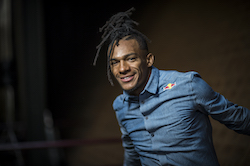
NYC-based Neguin is an internationally renowned dancer, choreographer, martial artist, DJ and occasional actor, the freshest export from Brazil and one of the most elite talents in breakdance history. Recognized for his unique fusion of Capoeira, acrobatics and breathtaking B-Boy stunts, Neguin has won countless awards and competitions, including the coveted Red Bull BC One championship. He’s toured and worked with high profile artists such as Madonna, Erykah Badu, Jennifer Lopez and Marcelo D2, and performed internationally at renowned productions such as NBC’s World of Dance and MTV’s America’s Best Dance Crew. His time in isolation is all about focusing and harnessing his energy.
What’s a typical day in isolation like?
“My day starts when I open my windows and connect myself with the sun. Immediately, I start to move slowly, as a form of holistic physical alignment, followed by a nutritious breakfast – usually organic fruits. I chill for about two hours before I start teaching my online classes, both group and individual, and then I have lunch. I train in the afternoon by myself, focusing on dance, Brazilian Jiu Jitsu and Capoeira, and then I relax and spend time with my mom. At night time, I still have ‘going out energy’, but because of isolation, I create my own party atmosphere with live DJ sets on my social media, connecting to thousands of people around the world. After that vibe, I chill again by drawing, hand-writing or watching videos to learn things that inspire me. I miss traveling and everything else, but as long I stay active and productive while in isolation, I feel positive.”
What does your creative space look like at home?
“It’s funny; I set up my DJ equipment in the living room in front of the TV so I can mute the TV while it’s showing a festival like the Burning Man. Everyone is dancing, and I am live DJ-ing at the same time, so I have a sort of digital crowd! It gets limited at times, but I am adaptable to my at-home space, just like a chameleon changing its colors whenever it’s necessary.”
Why do you think dance and movement is so important for mental health?
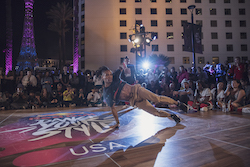
“Simply because dance and movement are in connection with everything in the universe within all shapes and forms. You’re creating sacred movements that have been passed to us by our ancestors since the beginning of time. It’s sacred geometry, it’s a spiritual connection where you heal yourself or indulge yourself in a melodic journey in which every movement has its vibration, power and harmony. For instance, when you see someone spinning on their head, remember that a person is upside down spinning with the same gravitational force as a tornado. Whenever you freely move your body, you’re bringing energy to your life by organically aligning all chakras through movement connections. Health is wealth, so as long as I am healthy and taking care of my mind, body and spirit, I will always be grateful for my existence and these principals of self-enlightenment.”
What’s your advice for dancers who are struggling mentally at the moment?
“I would say if you are a dancer, you should also be interested in many other art forms and movement styles as well. We are so lucky to live in the era of the internet, where you can learn other disciplines simply by watching videos and tutorials with reliable sources of information. So take this time to learn something new, perhaps martial arts, yoga, languages or instruments, because everything you learn will collectively relate to the growth of your artistry in general.”
RoxRite (Instagram: @roxrite95)
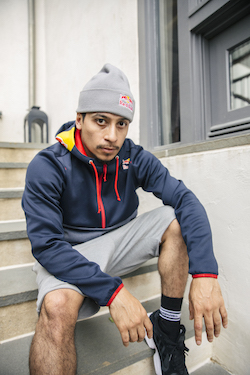
RoxRite was born in Guadalajara, Mexico, and now resides in California. After starting dance at the age of 12, he is now one of the industry’s biggest names and a Red Bull BC One All Star. Some of his wins include the Pro Am 2004, UK B-Boy Championships 2005, R16 Korea 2009, Euro Battle 2009, Freestyle Session World Finals 2009, 2013 and 2014 and the Red Bull BC One in 2011. In fact, RoxRite was the first B-Boy to clock up 100 victories. During isolation, he’s trying to stay connected with family, friends and the outdoors to stay well.
Why is dance so important for mental health?
“Dance and movement, or pushing your mind to be creative, helps you stay active. Feeling good physically can boost your confidence. Dancing and enjoying music is like therapy to me. In those moments, there is nothing other than the moment to express and feel yourself on a more internal level.”
Describe a typical day in isolation for you.
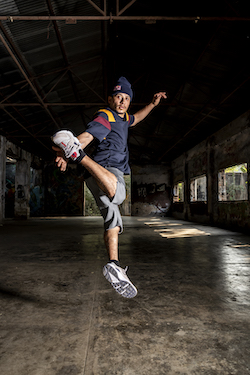
“My days as of late have been very casual compared to my regular routines. I start off with breakfast, emails and stretching. In the afternoons, I either dance or go outside on a walk to clear my mind. In the evenings, I’m either creating content, editing videos or writing up ideas for future projects. But I need to dance to keep my mind clear. It is a moment of freedom for me when I begin to practice. Reading has helped me, going on walks and getting fresh air has been helpful, and communicating with family and friends is big for me, too. Laughing and stepping out of the day-to-day stress help me stay leveled.”
What does your creative space look like at home?
“All I need is a floor and a speaker. We have enough space in our place to be able to dance and teach online classes if needed. I also turn my home into my YouTube space when it comes to shooting my content.”
What’s your advice for dancers who are struggling mentally at the moment?
“As a dancer, if you have the space, just dance. Try to reach that new level you’ve always wanted to reach. Now is the time to touch on things you may lack. Get creative in your practices, and try new concepts you’ve never tried. Look for new music and explore your creativity in the best way you know.”
Angyil (Instagram: @angyil)
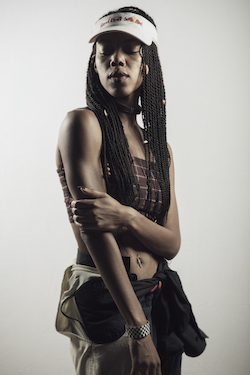
Originally from Kansas City, Missouri, Angyil has garnered global attention for her work and her unique hip hop style. Originally a ballet dancer, she has since gone on to win battles such as Juste Debout Experimental, The Notorious IBE, the 2016 World of Dance world finals, 2018’s Payback, RF Jam 2019 and Pura Calle in Peru in 2019. She’s also been featured on So You Think You Can Dance and traveled across the world to perform with commercial artists in music videos and on tour. During isolation, Angyil is taking time out to refocus and explore her own mental health.
Why do you think dance is so important for mental health?
“I am often unable to get things out verbally, so when I dance and move, I’m able to express my emotions. Instead of having things build up and not be able to express them, I can let it out physically through dance. It helps me release tension and anger or even joy and happiness. When you exercise, you feel different, and with dance, it’s like you’re an athlete and an artist in one. You’re feeding your artistic side but also your physical ability, so they both go hand in hand.”
Describe a typical day in isolation.
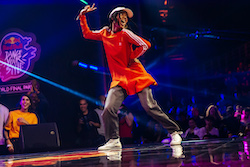
“During this time, I’m not really trying to take class. Instead, I am focusing on my mental health and finding my inner voice. When I travel, I soak so much in, like a sponge, so I am using this time to hear my thoughts and shut everything else out. The less I plan certain things, the more authentic things come out, so I try not to plan too much so I can get to the bottom of my own emotions. I’ll put some music on, or sometimes I don’t put music on, the birds will be chirping, and I’ll just dance to the birds. Or I’ll be doing the dishes, and I’ll just freestyle. I’m a bit of an introvert, so this has given me time to look inside myself, too. Before, things were really hectic, and I wasn’t paying attention to my own mental health because my schedule was so busy, so this is time when I’m finding inconsistencies within myself and working on those. It’s not always pretty because we find things about ourselves that we don’t like, but regardless, it needs to be done. It’s an interesting journey, but I’m learning a lot about myself. When this is over, I only want to do things I am absolutely passionate about. When you really love what you do, you give your everything emotionally and physically, and I feel like I missed out on a lot of my family and the people who love me the most. I don’t want to overwork myself and have a bunch of memories of my career but not have memories with the people I love the most. So I think I will come out of this consciously thinking, ‘Hey, you need a balance.’”
What does your creative space look like at home?
“I hadn’t had a home for years; I was just travelling from country to country living out of my luggage. But right before this happened, in December 2019, I purchased a home. They gave me the keys, and a couple of hours after that, I ran to the airport to fly to Europe for a job. So I have had my home but haven’t been able to decorate it or anything! So this has finally given me time to decorate my house. I’ve been putting things together, and I’ve learned I’m actually good at building things. I’ve built a coffee table from scratch, I built a bookshelf, and I’m going to build a bed. I’ve been putting up things I’ve been collecting on my travels; I’ve finally got a home to put them in.”
What’s your advice for dancers who are struggling mentally at the moment?
“I feel like, especially if you’re an artist, something that helps with staying mentally well is being honest with yourself. If you’re genuinely sad, express that in some kind of way and find different solutions, but denying it is not going to make it better. If you’re scared about this situation, admit that and live with that and find a solution for how you’re going to cope. You can also put things up around the house to remind you of those solutions. And, something that’s really helped me is having plants in the house – something that’s living that you have to look after. If you can’t go outside every day, having nature in your home and knowing that it’s growing is pretty cool.”
By Emily Newton-Smith of Dance Informa.


